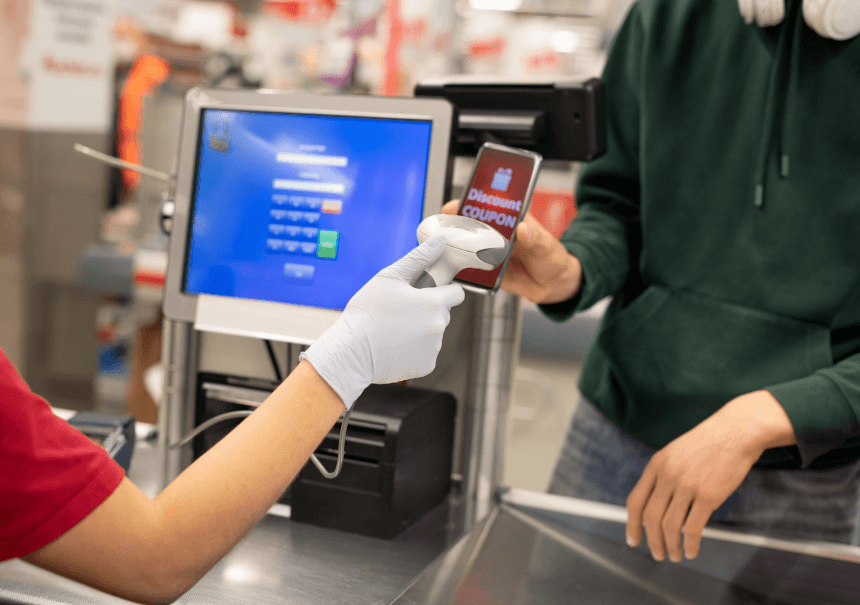What is the AIDA model and how to use it in marketing?

Marketing is constantly evolving, adapting to the changing needs and expectations of customers. One of the most fundamental and still important marketing tools is the AIDA model, which focuses on the stages of the customer’s purchasing process and is the key to effectively engaging and convincing recipients. Today we will talk about what the AIDA model is and how to use it in marketing. And, of course, how to combine this model with marketing automation.
What is the AIDA model?
The AIDA model is an acronym – four key stages through which a potential customer goes from the first contact with a product or service to making a purchase decision.
First stage. Attention . Drawing the attention of a potential customer. The idea is for customers to learn about the existence of a given product – so you need to arouse interest and attract attention using various tools, such as advertisements, marketing content, social media or advertising campaigns.
At the first stage, start the content by presenting the problem or need that the customer encounters. Use data about audience behavior to create content that the customer will identify with.
A good idea is slightly clickbait titles that will attract the customer’s attention. But be careful not to overdo it: every piece of content is a promise that should be kept.
How will Marketing Automation help you gain customer attention? Use marketing automation tools to analyze audience data and determine who your target group is. Thanks to this, you will create personalized campaigns that will attract the attention of the right audience.
Stage two. Interest (Interest). You have the attention of potential customers. Now you need to spark their interest. At this stage, you provide information that will help the recipient understand what benefits and values the product offers. This is the time to distribute educational content, blog entries, reviews, comparisons and product descriptions.
Focus the content in stage two around a product or topic that is important to your target group. Interest potential customers with data and facts. Use social proof to recommend your products: show how they solved other customers’ problems.
How will marketing automation help? The system monitors customer activities, such as opening an e-mail or clicking a link on the website, and this way you can check what arouses interest and focus on such content. Additionally, Marketing Automation will help you deliver content of increasing complexity as the customer relationship develops.
Stage three. Desire. It’s time to arouse emotions – build a feeling of desire among customers so that they actually want to buy your product. It is worth showing why it is unique and why it is worth having it. This is the stage in which you use the strategy of building a brand image and differentiating yourself from the competition, emphasizing the advantages of your company.
Content in stage three: show how using your products will benefit you. Use CTAs to encourage the customer to take specific actions, e.g. contact your company.
Where is the place for Marketing Automation? Well, marketing automation is great at arousing the desire to buy. At this point in the customer journey, you already have enough data about their behavior to create engaging, personalized content. You already know what they are looking for and what they are interested in: you can now build the need for a specific product.
Stage four. Action. You encourage customers to take a specific action – purchase. You turn interest and desire into an actual purchase. Here it is worth using tools such as landing pages or order forms; all marketing tricks that encourage immediate reaction.
The content at stage four focuses on “not letting go” of the customer. Give your recipients clear instructions on what to do to complete the purchase. For those who are still hesitant, offer discounts or special offers to convince them to make a purchase.
Marketing Automation will be particularly effective in the case of abandoned carts, i.e. in situations where the customer has not completed the purchasing process. You can use automation to remind customers that they are just one click away from getting their dream item, and at the same time offer them various promotional offers to further increase their chances of making a purchase.
Is the AIDA model passe?
Yes, marketing is constantly changing. New innovations and models are emerging. However, the AIDA model is still relevant because it focuses on basic human emotions and needs that remain unchanged.
People have certain needs: e.g. information, solving problems, satisfaction, or fulfilling dreams. The AIDA model responds to these needs in the purchasing process.
Despite the rapid development of technology and marketing tools, the basic stages of the purchasing process remain the same. The way we achieve these goals changes all the time, but the goals themselves are constant. In other words, evolution, not revolution.
The AIDA model emphasizes delivering value at every stage of the purchasing process. This is important in modern marketing, which focuses on creating long-term relationships with customers.
In addition, AIDA is simple to understand and relatively easy to use, which is why it is often used as a basis for creating more complex marketing strategies. The clear structure of the AIDA model makes it an effective tool for communication and transfer of information within the marketing team.
How to use the AIDA model in marketing?
The advantage of the AIDA model is its universality. You can use it both online and offline.
Online advertising – by using the AIDA model in online campaigns, you will more precisely adapt the content to customer needs and communicate at every stage of the purchasing process.
Websites – it is worth checking whether your website is optimized for AIDA stages. The home page should attract attention, the product page should attract interest, the review and social proof page should arouse desire, and the shopping page should encourage immediate action.
Email marketing. Mailings are a great tool for guiding customers through the individual stages of the AIDA model. From a welcome message, through newsletters with interesting content, to special offers. This way you can deliver the desired value at every stage.
Traditional advertising – billboards, radio and television ads. It is known that most marketing activities have moved online, but the above advertising tools still help with sales, and in many cases (e.g. when communicating with seniors) they are still the basic form of product promotion. Any advertisement, regardless of its medium, if it is good, attracts attention, arouses interest, arouses desire and encourages action.
Combining content marketing with the AIDA model gives good results. Use blog articles to create valuable content that educates your audience, which is crucial at the interest stage. However, product reviews in the form of content are a way to build desire – it is known that customers trust other customers more than the brands themselves.
Also use the full potential of product pages. Both product descriptions and photos should be full of information that arouses desire. Describe the benefits, unique features of your products and tempt the recipient with beautiful photographs to direct them towards action.
Summary
The AIDA model is still a valid marketing tool that helps understand the stages a customer goes through in their purchasing journey. Understanding these stages allows marketers to tailor content and marketing strategies to meet customer needs at each stage. Thanks to this, you can increase the effectiveness of marketing campaigns, build long-term relationships with customers, and achieve better sales results.
We cannot forget that in today’s marketing world, competition is huge and customers have increasingly higher expectations. The AIDA model can help brands stand out from the competition by delivering value to customers at every stage of their purchasing journey. However, it is important to remember that this model is not just a tool, but an approach to marketing that emphasizes building long-term relationships and providing value.
In a globalized and increasingly digital world, the ability to adapt to and focus on customer needs is crucial. The AIDA model is a tool that helps achieve this goal.



